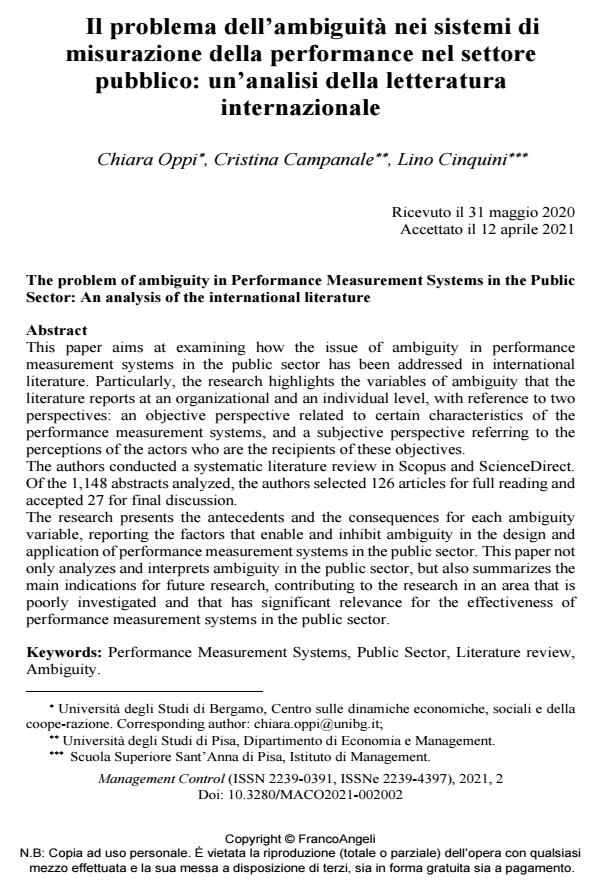Il problema dell’ambiguità nei sistemi di misurazione della performance nel settore pubblico: un’analisi della letteratura internazionale
Titolo Rivista MANAGEMENT CONTROL
Autori/Curatori Chiara Oppi, Cristina Campanale, Lino Cinquini
Anno di pubblicazione 2021 Fascicolo 2021/2
Lingua Italiano Numero pagine 28 P. 11-38 Dimensione file 278 KB
DOI 10.3280/MACO2021-002002
Il DOI è il codice a barre della proprietà intellettuale: per saperne di più
clicca qui
Qui sotto puoi vedere in anteprima la prima pagina di questo articolo.
Se questo articolo ti interessa, lo puoi acquistare (e scaricare in formato pdf) seguendo le facili indicazioni per acquistare il download credit. Acquista Download Credits per scaricare questo Articolo in formato PDF

FrancoAngeli è membro della Publishers International Linking Association, Inc (PILA)associazione indipendente e non profit per facilitare (attraverso i servizi tecnologici implementati da CrossRef.org) l’accesso degli studiosi ai contenuti digitali nelle pubblicazioni professionali e scientifiche
This paper aims at examining how the issue of ambiguity in performance measurement systems in the public sector has been addressed in international literature. Particularly, the research highlights the variables of ambiguity that the literature reports at an organizational and an individual level, with reference to two perspectives: an objective perspective related to certain characteristics of the performance measurement systems, and a subjective perspective referring to the perceptions of the actors who are the recipients of these objectives. The authors conducted a systematic literature review in Scopus and ScienceDirect. Of the 1,148 abstracts analyzed, the authors selected 126 articles for full reading and accepted 27 for final discussion. The research presents the antecedents and the consequences for each ambiguity variable, reporting the factors that enable and inhibit ambiguity in the design and application of performance measurement systems in the public sector. This paper not only analyzes and interprets ambiguity in the public sector, but also summarizes the main indications for future research, contributing to the research in an area that is poorly investigated and that has significant relevance for the effectiveness of performance measurement systems in the public sector.
Parole chiave:Performance Measurement Systems, Public Sector, Literature review, Ambiguity.
- Towards Digital and Sustainable Organisations Manuela Paolini, Domenico Raucci, pp.69 (ISBN:978-3-031-52879-8)
Chiara Oppi, Cristina Campanale, Lino Cinquini, Il problema dell’ambiguità nei sistemi di misurazione della performance nel settore pubblico: un’analisi della letteratura internazionale in "MANAGEMENT CONTROL" 2/2021, pp 11-38, DOI: 10.3280/MACO2021-002002